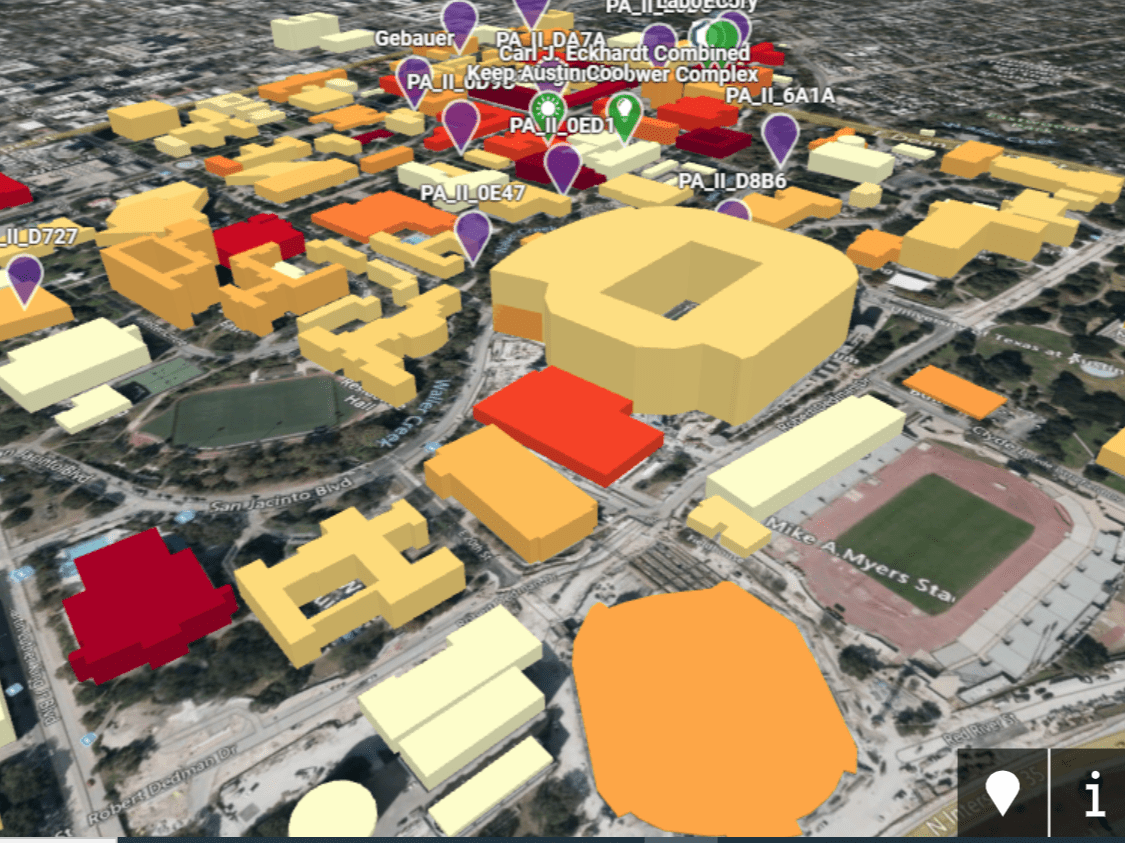Digital Twin of UT Campus Visualizes Present, Past, Future Energy Needs

A new “digital twin” of The University of Texas at Austin campus gives the clearest picture yet of historical and current energy usage across the Forty Acres — from engineering labs, to medical facilities, to sports stadiums, to residence halls.
A digital twin is a virtual representation of a real-life object that visualizes large swathes of data about the physical space. Digital twins can serve as a shell for other researchers to apply data and give decision-makers new insights into the spaces they manage.
“We deeply underestimate how much climate change will impact future energy use.”
Zoltan NagyAssistant Professor, Fariborz Maseeh Department of Civil, Architectural and Environmental Engineering
The digital twin displays past, present and future energy usage in buildings across campus, offering different scenarios based on climate models.
“This data all lives in different silos, and we wanted to build a platform that allows us to communicate it to the community in a digestible way,” said Zoltan Nagy, an assistant professor in the Fariborz Maseeh Department of Civil, Architectural and Environmental Engineering, and one of the leaders of the project. “We hope that this will serve as a starting point for a major discussion of how we are using energy on major college campuses across the U.S. We need to think very carefully about energy usage in such large spaces.”
Working with colleagues in the Jackson School of Geosciences and UT’s Facilities Services, Nagy and his team have pulled data together from several sources, including a dashboard created by Facilities Services, running a simulation called CitySim on the Texas Advanced Computing Center’s supercomputers and future climate data from OpenMeteo. The researchers worked with Austin software company Bentley Systems, and Nagy credits Calvin Lin, a graduate student in his lab, with pulling together the disparate data sources.
The researchers pointed specifically to the future models as valuable information for the public going forward.
“We deeply underestimate how much climate change will impact future energy use,” said Dev Niyogi, a professor in the Jackson School’s Department of Earth and Planetary Sciences who is also affiliated with UT’s civil engineering department. “With this data, we hope to raise awareness of this issue publicly so we can start asking questions about what our energy needs going forward might look like.”
The work is part of a grant Niyogi and Nagy received from the National Science Foundation to deploy digital twin technology across a variety of applications, from individual buildings to cities to the atmosphere around us. The researchers are also working with the city of Austin to study “urban heat islands” in different parts of the city — instances of higher temperatures in certain areas due to the built environment.
The researchers also hope others will apply their data to the UT campus digital twin. Nagy mentioned water, urban planning and construction data as potential additions that could make the tool even more robust.
The data could also be used to measure any future energy use reduction goals schools and colleges or even individual buildings might undertake.
